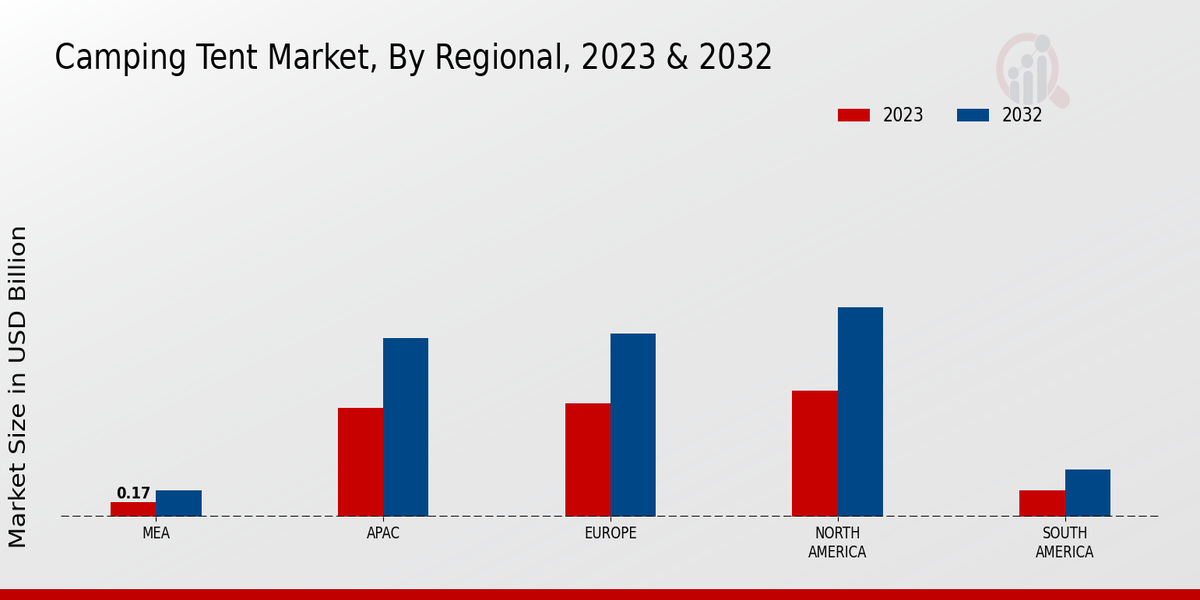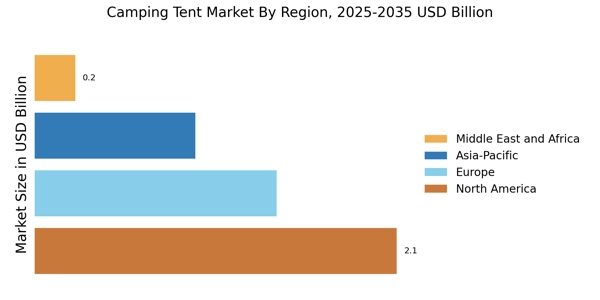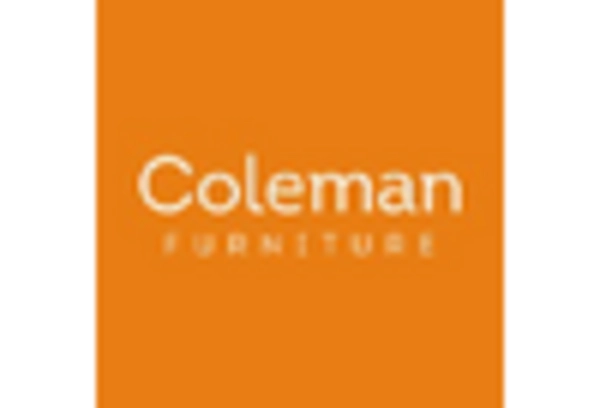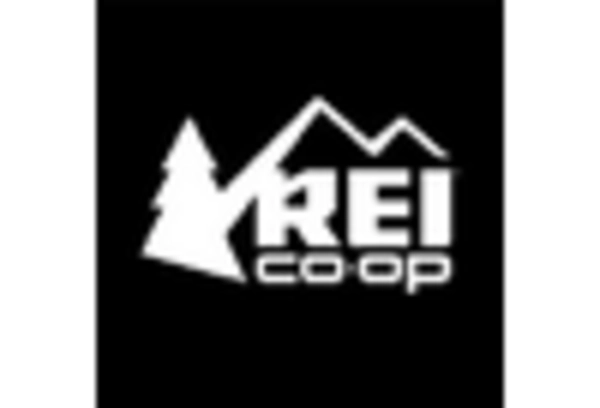Expanding Camping Demographics
The Camping Tent Market is experiencing a demographic shift as camping becomes more popular among diverse age groups and backgrounds. Traditionally associated with families and outdoor enthusiasts, camping is now attracting millennials and Gen Z consumers, who seek unique experiences and adventures. Recent data indicates that nearly 40% of new campers belong to these younger demographics, highlighting a shift in consumer behavior. This expansion of the camping demographic is likely to drive demand for a variety of tent styles, from family-sized tents to lightweight options for solo travelers. As the Camping Tent Market adapts to these changing preferences, it may see an increase in product offerings tailored to meet the needs of this evolving consumer base. This trend suggests a promising future for the Camping Tent Market as it embraces a broader audience.
Growth of E-commerce and Online Retail
The Camping Tent Market is significantly influenced by the growth of e-commerce and online retail platforms. With the increasing convenience of online shopping, consumers are more inclined to purchase camping gear, including tents, through digital channels. Recent statistics reveal that online sales of outdoor equipment have surged by over 30% in the past year. This trend is particularly appealing to younger demographics who prefer the ease of browsing and purchasing from home. Additionally, online platforms often provide extensive product information and customer reviews, aiding consumers in making informed decisions. As e-commerce continues to expand, the Camping Tent Market is likely to benefit from increased visibility and accessibility, potentially leading to higher sales volumes and market penetration.
Rising Interest in Sustainable Camping
Sustainability is becoming a pivotal driver in the Camping Tent Market as consumers increasingly prioritize eco-friendly products. The demand for sustainable camping gear, including tents made from recycled materials, is on the rise. Recent surveys indicate that over 70% of campers are willing to pay a premium for environmentally friendly products. This shift towards sustainable camping practices reflects a broader societal trend towards environmental consciousness. As manufacturers respond to this demand, the Camping Tent Market is likely to see a proliferation of eco-friendly options, which could attract a new segment of environmentally aware consumers. Furthermore, the integration of sustainable practices in production processes may enhance brand loyalty and consumer trust, ultimately benefiting the Camping Tent Market in the long term.
Innovations in Tent Design and Materials
The Camping Tent Market is witnessing a transformation due to innovations in tent design and materials. Manufacturers are increasingly utilizing advanced materials that enhance durability, weather resistance, and ease of setup. For instance, lightweight and waterproof fabrics are becoming standard, appealing to a broader range of consumers, including casual campers and serious adventurers. Additionally, the introduction of modular tent systems allows for customization, catering to diverse camping needs. Market data suggests that the demand for high-performance tents is on the rise, with a projected growth rate of 6% annually. This innovation-driven approach not only enhances user experience but also positions the Camping Tent Market favorably against competing outdoor gear segments. As technology continues to evolve, the potential for further advancements in tent design remains significant.
Increased Outdoor Recreation Participation
The Camping Tent Market experiences a notable surge in demand as outdoor recreation participation rises. Recent data indicates that approximately 50% of the population engages in outdoor activities, such as camping, hiking, and backpacking. This trend is driven by a growing appreciation for nature and the desire for adventure. As more individuals seek to escape urban environments, the need for reliable camping gear, particularly tents, becomes paramount. The Camping Tent Market is likely to benefit from this increased interest, as consumers prioritize quality and durability in their outdoor equipment. Furthermore, the rise of social media platforms showcasing outdoor experiences may further encourage participation, leading to a sustained demand for camping tents. This trend suggests a robust growth trajectory for the Camping Tent Market in the coming years.



















Leave a Comment